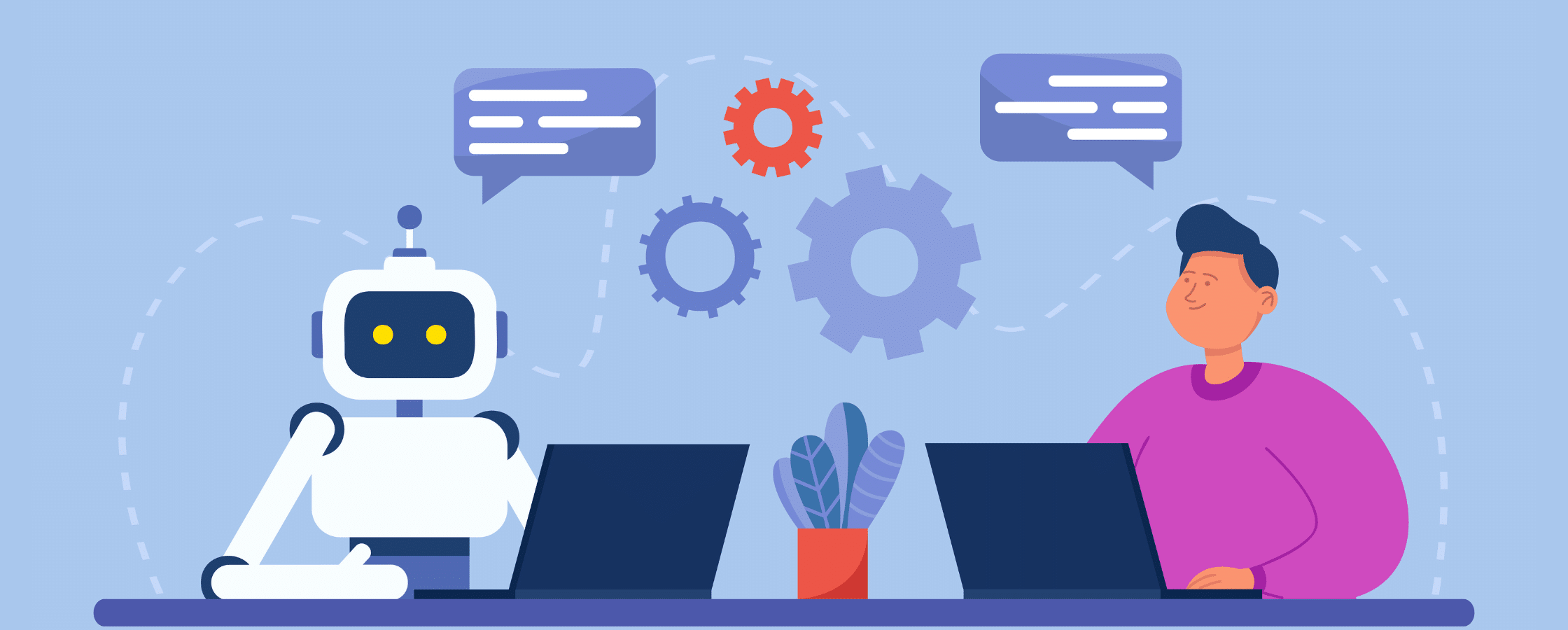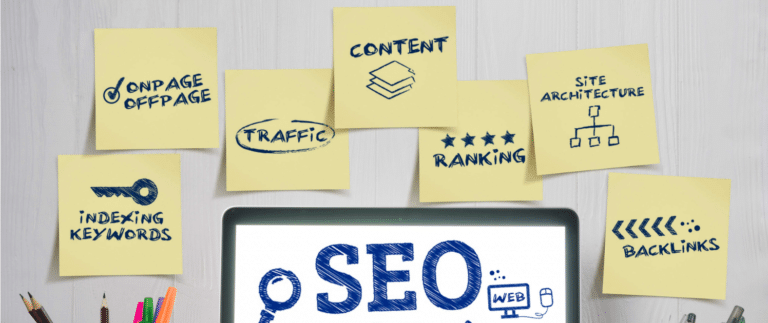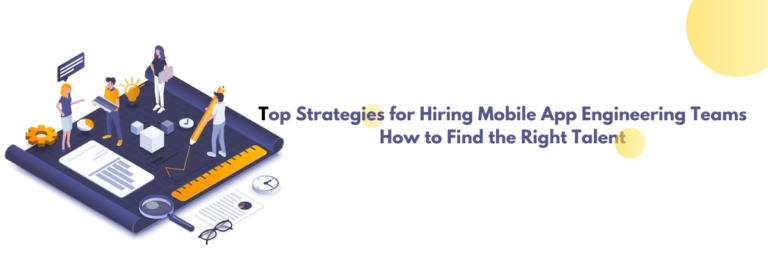Unleash the Potential of ChatGPT for your Business | How to use ChatGPT
In recent years, Artificial Intelligence (AI) has made remarkable progress in the field of natural language processing. One of the most exciting developments in this area is the creation of AI language models that can engage in human-like conversations. ChatGPT is one such AI language model that has been making waves in the tech industry. However, many businesses are still unsure about how to use ChatGPT effectively to unleash its full potential.
Developed using the advanced GPT-3.5 architecture, the ChatGPT interface can simulate human-like conversation and generate responses that are indistinguishable from those of a real person.
With its vast knowledge base of human feedback and ability to learn and adapt to human feedback, it has enormous potential to revolutionize the way we communicate with technology.
In this blog, we will take a closer look at ChatGPT, and explore its features and capabilities. We will also discuss the potential applications of this remarkable AI language model.
Table of Contents
- What is ChatGPT and How Does it Work
- Why We’re Obsessed with the Mind-Blowing ChatGPT AI Chatbot
- How to Use ChatGPT
- ChatGPT’s Limitations
- 11 Strategic Applications of ChatGPT for Your Business
- 3 Successful Business Case Studies of Using ChatGPT
- How to Smoothly Integrate ChatGPT in Your Business Processes
- Future of ChatGPT and its Potential Impact on Businesses
- The Takeaway
- Frequently Asked Questions
What is ChatGPT and How Does it work
ChatGPT is an artificial intelligence (AI) language model developed by OpenAI. ChatGPT API uses the GPT-3.5-turbo AI model as the popular chatbot, which means it’s one of the most advanced AI language models available today.
This smart AI chatbot is designed to understand natural language input and generate human-like responses in real-time. This makes it a powerful tool for a wide range of applications, including answering questions, providing recommendations, and even generating creative content.
It is a large language model that is trained on a vast amount of text data using unsupervised reinforcement learning alone. This means it is a large language model that can learn patterns and generate responses without explicit instruction.
Here’s how it works:
- Training Data: ChatGPT is trained on a massive amount of text data, including books, articles, and web pages. The data is preprocessed to remove noise, such as HTML tags, and is fed into the model as input. It can also collect user feedback to further widen its knowledge and improve its functioning.
- Transformer Architecture: ChatGPT uses a transformer architecture, specifically the GPT-3.5 model, which consists of a series of layers that process the input text. Each layer uses self-attention to weigh the importance of different words in the input and generate a context vector.
- Response Generation: Once the input text is processed through the layers, ChatGPT generates a response by sampling from a probability distribution of possible outputs. The output is then fed back into the model as input, allowing the chatbot to generate a coherent conversation.
- Fine-Tuning: You can fine-tune ChatGPT further on specific tasks or domains by training it on more targeted data. This process improves the model’s accuracy and ability to generate relevant responses in specific contexts.
Why We’re Obsessed With the Mind-Blowing ChatGPT AI Chatbot
The development of ChatGPT has brought about a new wave of excitement and fascination with the potential of AI chatbots. People are obsessed with this amazing AI chatbot for several reasons:
Its advanced language processing capabilities allow it to generate natural and sophisticated responses that mimic those of a human. This makes it a valuable tool for businesses seeking to improve their customer service or create engaging content that ranks higher on Google search and other search engines.
Additionally, its versatility and ability to continuously learn and improve over time make it an exciting and innovative technology that has the potential to revolutionize the way we interact with machines.
The use of cutting-edge technologies such as deep learning and machine learning has also contributed to the hype surrounding ChatGPT.
As this technology continues to evolve, we can expect to see even more exciting advancements in the field of AI chatbots.
How to Use ChatGPT?
Here is how to use ChatGPT effectively and get the most out of this powerful AI tool:
1. Getting Started with ChatGPT
Using ChatGPT is simple. You can create an account on chat.OpenAi.com by using your Google or Microsoft account. Once you are registered, all you need to do is type in your question or statement, and ChatGPT will do its best to provide you with a helpful response.
Here are some tips to help you get started:
- Be Specific: The more specific your question or statement, the better ChatGPT will be able to understand what you’re looking for. For example, instead of asking “What is the meaning of life?” try asking “What is the meaning of life according to philosophy?”
- Be Clear: Try to avoid using slang, abbreviations, or overly complex language. Clear, concise sentences are easier for ChatGPT to interpret. If the ChatGPT prompts you enter are too complex, you can fine-tune ChatGPT responses by breaking the query into smaller and simpler parts.
- Be Patient: While ChatGPT is designed to provide quick responses, sometimes it may need a moment to generate a helpful answer. So please be patient!
- Keep it Appropriate: Remember that ChatGPT is an AI language model and therefore does not have feelings or emotions. However, it’s designed to be respectful and helpful to all users, so please keep your questions and statements appropriate and respectful as well. The AI of this software can make the model reject inappropriate requests to avoid generating unsafe content.
Using ChatGPT for Different Tasks
ChatGPT is a versatile tool that can be used for a wide range of tasks.
Here are some examples of how to use ChatGPT for different purposes:
- Answering Questions: ChatGPT is great for answering questions on a wide range of topics. For example, you can ask it questions about history, science, literature, or any other subject you’re interested in.
- Providing Recommendations: This tool can also provide recommendations based on your interests or preferences. For example, you can ask it for book or movie recommendations, or even for restaurant recommendations in your area.
- Generating Creative Content: ChatGPT can also be used to generate creative content such as poems, stories, or even jokes. Just give it a prompt, and it will generate a unique and creative response.
- Generating Summaries: ChatGPT is trained on a large corpus of text data, which means it has the ability to generate human-like summaries of longer pieces of text. If you want to know how to use ChatGPT for creating summaries, you can provide it with a longer piece of text, such as an article or a report, and ask it to generate a summary of the main points.
- Creating Outline for Content: The chatbot can help you to write efficiently and also structure your content for enhanced readability. You can ask “Can you suggest some key points for a piece of content on [insert topic]?”
- Discovering New Ideas: Wondering how to use ChatGPT for discovering new ideas? you can provide it with a prompt or a question that asks for a unique perspective or a creative solution. You can command “Can you suggest some ideas or prompts for [insert topic]?”
ChatGPT’s Limitations
While ChatGPT is a powerful language model, it does have some limitations that are important to keep in mind. Here are a few:
- Lack of Common Sense: Although ChatGPT can generate responses based on patterns in the text data it was trained on, it lacks common sense reasoning abilities. This means that it may generate responses that are factually correct but still don’t make sense in context.
- Inability to Handle Complex Tasks: While this AI chatbot is capable of generating natural language responses, it may not be able to handle complex tasks such as problem-solving or decision-making.
- Limited Domain Expertise: ChatGPT is trained on a large corpus of text data, but its expertise may be limited to the domains covered in that data. For example, it may not be able to provide accurate responses to highly technical questions or those related to specific industries or fields.
- Risk of Biased Responses: Like all machine learning models, ChatGPT may exhibit biased behavior if the training data is biased or if the model is not designed to handle diverse perspectives and experiences.
- Vulnerability to Adversarial Attacks: ChatGPT can be vulnerable to adversarial attacks, where malicious actors intentionally provide inputs that cause the model to generate incorrect or misleading responses.
- Difficulty with Open-Ended Tasks: ChatGPT may have difficulty with open-ended tasks where there is no clear answer or solution. In these cases, it may generate responses that are vague or unrelated to the question.
- Limited Understanding of Emotion: While ChatGPT can generate human-like responses, it has a limited understanding of emotions and may not be able to provide empathetic or nuanced responses in emotional situations.
11 Strategic Applications of ChatGPT for Your Business
ChatGPT is an advanced AI language model that has numerous practical applications, including its use in business settings.
From improving customer service to generating content and analyzing data, ChatGPT can help businesses streamline operations and improve efficiency.
Let’s explore how ChatGPT can be useful for businesses and how it can be integrated into their operations to enhance their overall performance.
1. Customer Support
One can use it to power chatbots and virtual assistants that provide customer support services 24/7. With its natural language processing capabilities, ChatGPT can provide customers with immediate and personalized responses. This can lead to improved customer satisfaction and retention rates.
2. Sales and Lead Generation
ChatGPT generates leads and increases sales by engaging with prospects in real-time conversations. ChatGPT can assist with lead qualification, recommend products and services, and guide the prospect through the sales funnel.
3. Content Creation and Curation
ChatGPT provides unique and high-quality content for your website, social media, and other marketing channels. It can also be used to curate content by scanning through large volumes of text to identify relevant information.
4. Language Translation
It helps to translate text between different languages, allowing businesses to communicate with customers and partners globally.
5. Personalization
It is useful in personalizing customer experiences by generating responses that take into account a user’s preferences and previous interactions with the business. This can lead to increased customer loyalty and repeat business.
6. Fraud Detection
It can detect fraudulent behavior by analyzing text data for patterns and anomalies. This can help businesses prevent fraudulent activities such as spamming, phishing, and identity theft.
7. Human Resource Management
It can be used to assist with HR tasks such as candidate screening, employee onboarding, and performance evaluation. This can save time and resources while providing a personalized experience for candidates and employees.
8. Market Research
It can be used to analyze text data to identify customer needs, preferences, and behaviors. This can help businesses make data-driven decisions and improve their products and services.
9. Reputation Management
It can be used to monitor social media and online reviews to identify and respond to negative comments and reviews. This can help businesses protect their reputation and improve customer satisfaction.
10. Analytics and Insights
It can be used to analyze text data and generate insights into customer behavior, market trends, and business performance. This can help businesses make informed decisions and improve their overall performance.
11. Employee Training
This AI tool can be used to provide automated training and support to employees, such as answering questions about company policies or providing job-related information. This can help businesses improve employee productivity and reduce training costs.
3 Successful Business Case Studies of Using ChatGPT
Chatbots powered by ChatGPT can help businesses improve customer engagement, reduce costs, and increase revenue.
These case studies demonstrate the versatility and effectiveness of using ChatGPT for businesses.
1. H&M
H&M, the multinational fashion brand, launched a ChatGPT-powered chatbot called “H&M Kik” in 2016. The chatbot helped users browse and purchase clothing items by asking them a series of questions about their preferences and providing personalized recommendations.
H&M Kik also provided fashion tips, style advice, and information about sales and promotions. The chatbot was highly successful, with a conversion rate of over 30%, and helped H&M engage with younger audiences.
2. Mastercard
Mastercard, the global financial services company, launched an AI chatbot developed/powered by ChatGPT called “KAI” in 2016. KAI helped Mastercard customers with balance inquiries, transaction history, and fraud alerts.
The artificial intelligence chatbot also was able to handle a large volume of customer inquiries, reducing the workload on Mastercard’s call centers. KAI was highly successful, with a customer satisfaction rate of over 90%, and helped Mastercard save on customer service costs.
3. Pizza Hut
Pizza Hut, the global pizza restaurant chain, launched a ChatGPT-powered chatbot called “Pizza Hut Assistant” in 2017. The chatbot helped users order pizza and other menu items by asking them a series of questions about their preferences and dietary restrictions.
Pizza Hut Assistant also provided order tracking, delivery updates, and customer support. The chatbot was highly successful, with a conversion rate of over 50%, and helped Pizza Hut increase online sales and reduce order processing times.
How to Smoothly Integrate ChatGPT in Your Business Processes?
By integrating ChatGPT into their business processes, companies can improve customer service, automate routine tasks, and gather valuable insights from customer interactions.
However, integrating ChatGPT can be a complex and challenging process, requiring careful planning and execution.
Here are a few steps businesses can take to smoothly integrate ChatGPT into their operations and maximize its potential benefits:
- Identify Business Goals: Identify the business goals you want to achieve with Chat GPT. For example, improving customer satisfaction, increasing sales, or reducing costs.
- Determine Use Cases: Determine the specific use cases where Chat GPT can be used to achieve your business goals. This can include customer service, sales, content creation, and marketing.
- Select a Chat GPT Provider: Choose a Chat GPT provider that can meet your business needs. Look for a provider that has experience in your industry, offers customizable solutions, and provides good customer support.
- Train Chat GPT: Train Chat GPT on your specific use cases by providing it with relevant data and examples. This will help Chat GPT understand your business and generate more accurate and relevant responses.
- Integrate Chat GPT: Integrate Chat GPT into your existing systems and processes. This may require working with your IT department or external vendors to ensure seamless integration.
- Test and Refine: Test Chat GPT in a controlled environment to identify any issues or areas for improvement. Refine Chat GPT based on the feedback you receive from users and customers.
- Measure Performance: Measure the performance of ChatGPT by tracking metrics such as customer satisfaction, sales, and response times. Use this data to continually refine and optimize ChatGPT to achieve better results.
Things to Keep in Mind While Using ChatGPT
As with any advanced technology, there are certain considerations that businesses must keep in mind when using ChatGPT.
- Ethical Considerations: As with any AI-powered technology, it’s important to consider the ethical implications of using ChatGPT. Creators must ensure that they program the chatbot to behave in an ethical and responsible manner, and that it does not perpetuate biases or engage in inappropriate behavior.
- Accuracy and Reliability: While ChatGPT is designed to generate human-like responses, it’s important to ensure that it is accurate and reliable in its responses. Businesses should regularly test the chatbot’s accuracy and monitor customer feedback to ensure that it is performing as expected.
- Data Privacy and Security: ChatGPT generates large amounts of data about customer interactions, and it’s important to ensure that this data is stored securely and used only for appropriate purposes. Businesses should have strong data privacy policies in place to protect customer information.
- User Experience: ChatGPT is designed to improve the user experience, but it’s important to ensure that it is actually achieving this goal. Businesses should regularly solicit feedback from customers and make changes to the chatbot’s programming and interface as needed to ensure a positive user experience.
- Human Oversight: While ChatGPT is an advanced technology, it’s important to remember that it is still a tool that requires human oversight. Businesses should ensure that there are processes in place to escalate customer issues to human representatives when necessary and to monitor the chatbot’s performance to ensure that it is meeting business objectives.
By keeping these considerations in mind, businesses can maximize the benefits of ChatGPT while minimizing potential risks and challenges
Future of ChatGPT and its Potential Impact on Businesses
ChatGPT is one of the most advanced and innovative AI language models available today. Its potential impact on businesses is significant.
As developers continue to evolve and improve ChatGPT, we can expect it to have a transformative effect on many aspects of business operations and customer engagement..
Some potential future developments and their potential impacts include:
Enhanced Personalization
ChatGPT has the potential to generate highly personalized responses to customer inquiries, based on factors such as previous interactions, purchasing history, and demographic information. This could lead to improved customer engagement and satisfaction, as well as increased sales and loyalty.
Improved Accuracy and Reliability
As developers continue to train ChatGPT on large datasets of human language, we can expect it to become increasingly accurate and reliable in its responses. This could lead to improved customer service, more efficient operations, and reduced costs.
Integration with Other Technologies
One can integrate ChatGPT with other advanced technologies such as virtual reality, augmented reality, and machine vision. This can allow businesses to create more immersive and engaging customer experiences.
Enhanced Data Analytics
This tool can generate large amounts of data about customer interactions, and businesses can use it to gain valuable insights into customer behavior and preferences. As data analytics tools become more advanced, businesses can use this information to make more informed decisions and improve operations.
The Takeaway
In conclusion, Chat GPT is an exciting technology. Additionally, the potential to transform the way businesses interact with their customers.
Chat GPT utilizes the power of natural language processing and machine learning to provide personalized, conversational responses to a range of queries, requests, and tasks, improving customer satisfaction, increasing sales, and reducing costs.
By leveraging the power of ChatGPT, businesses can improve customer engagement, streamline operations, and gain valuable insights into customer behavior and preferences.
Frequently Asked Questions
Is ChatGPT free?
The OpenAI API offers a free trial that allows developers to test the model. It also allows them to build applications with limited access to its features. If you want to access this tool for some basic content development or any other queries, ChatGPT costs nothing! However, to access more advanced features and higher usage limits, you require a paid subscription.
What is the price of the paid version of ChatGPT?
The pricing of the OpenAI API is based on usage, and the cost can vary depending on the number of requests and the complexity of the queries or tasks.
How do I access ChatGPT?
You can access ChatGPT through an openAI account at chat.openAIcom. If you are visiting an openAI web portal, then log into your openAI account then scroll down until you find ChatGTP.
Are the answers given by ChatGPT always correct?
You can expect ChatGPT to answer correctly most of the time. However, it can sometimes provide wrong answers and even nonsensical answers. While developers have trained this AI chatbot on vast amounts of data from other large language models, it is not infallible, and it can make mistakes or provide inaccurate responses.
What is the accuracy rate of answers given by ChatGPT?
The accuracy of ChatGPT’s responses depends on several factors. These factors include the quality of the input data, the complexity of the query or task, and the context in which developers generate the response. In case when there are not enough data with ChatGPT to answer you correctly, it writes plausible sounding but incorrect or nonsensical answers.
Can ChatGPT generate creative or original content?
ChatGPT can generate creative or original content to some extent. However, it’s important to note that ChatGPT’s ability to generate truly original content is still limited. It does not have a true understanding of creativity or originality in the way that humans do. This is why we recommend to have human reviewers proofread the content generated by ChatGPT before utilizing it.
Does ChatGPT give everyone the same answer?
The responses generated by ChatGPT may vary depending on factors. These include the input data it is trained on, human feedback, user feedback itself, and the context in which the input is given. The response can also be based on the user’s previous interactions with the model, and the specific implementation and configuration of the model.
Who built ChatGPT?
OpenAI, a research-led artificial intelligence firm has developed ChatGPT. The agency aims to develop and assist people in developing safe and useful AI technology and to provide assistance in the development of such systems.
Is ChatGPT encrypted?
ChatGPT itself is not encrypted, as it is a computer program running on servers. However, the data transmitted between your device and the server where ChatGPT generative AI is hosted may be encrypted, depending on the method you use to access ChatGPT.








